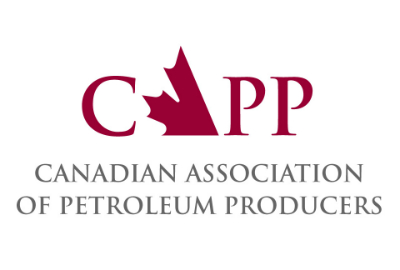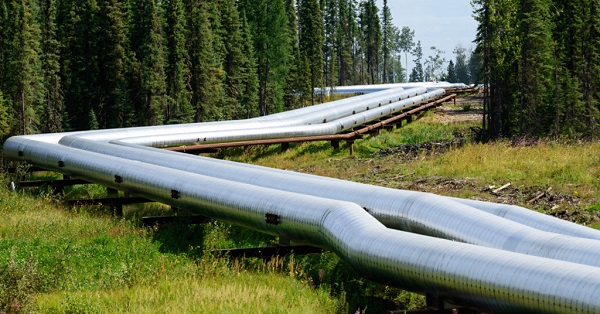Energy
Canadian Association of Petroleum Producers Releases Seven-Point Plan to Unleash Canada’s Energy Potential

From CAPP – The Canadian Association of Petroleum Producers
Canada’s economy is at a crossroads. Despite nearly a decade of ideological policy that has stifled growth in our sector, the energy industry stands ready to play a foundational role in driving new investments, creating and supporting high paying jobs, and providing a stable supply of affordable energy to Canadians and countries around the world.
With the right policy and investment environment, the oil and gas industry can help solve the country’s productivity and competitiveness challenges while enhancing its geopolitical influence with its trading partners—including the United States. The globe is becoming more unpredictable with continuously shifting trading patterns, making it essential for federal leaders to send the clear signal that Canada is ready to invite investment into our resource sector and grow our role as a secure supplier of energy to the world.
To that end, CAPP’s Energy Platform outlines seven steps the next government of Canada should take to unleash our energy advantage. Those include:
- Clear the roadblocks to building the infrastructure we need to connect Canadian energy to the world.
- Immediately streamline approvals for major projects already in the federal review process.
- Continue advancing emissions reduction technologies to enhance our environmental leadership while keeping energy affordable and competitive.
- Champion oil and natural gas as a critical part of Canada’s economic future.
- Don’t just build—build with speed.
- Use our abundance of natural resources to strengthen our energy security.
- Tariff-proof our economy by growing and diversifying market access for Canadian oil and gas.
You can download the full 2025 Energy Policy Platform at www.capp.ca/en/unleashing-canadas-energy-potential/.
Quotes from Lisa Baiton, CAPP President & CEO
“The global landscape is shifting rapidly. In recent weeks, it’s become clear our relationship with America has fundamentally changed—and we must act with urgency. Our focus should be on building a tariff-proof economy, not just for oil and natural gas, but for all Canadian products. This means building more pipelines, transportation corridors, LNG export facilities, expanding our ports – anything that provides Canadian businesses and Canadian products with direct access to global markets.”
“Canada and our energy sector are at a crossroads. Regardless of the threat of tariffs, the United States is making a seismic shift in its policy approach, making rapid reforms to climate, energy and tax frameworks. Canada must act just as quickly. The choices we make today will determine whether we remain a global energy leader or fall behind. With decisive leadership, smart reforms, and a renewed commitment to investment, we can unlock our full energy potential, support our partners and make new ones, create jobs, and deliver a more prosperous future for all Canadians.”
“Canada’s energy industry has long been a pillar of our economy, providing jobs, economic growth, and reliable energy. To help attract the next generation of investment and capture the opportunities ahead, the next federal government must actively promote oil and natural gas as a source of pride and a long-term cornerstone of our economy.”
About CAPP
The Canadian Association of Petroleum Producers (CAPP) is a non-partisan, research-based industry association that advocates on behalf of our member companies, large and small, that explore for, develop, and produce oil and natural gas throughout Canada. Our associate members provide a wide range of services that support the upstream industry.
CAPP’s members produce nearly three quarters of Canada’s annual oil and natural gas production and provide approximately 450,000 direct and indirect jobs in nearly all regions of Canada. According to the most recently published data, the industry contributes over $70 billion to Canada’s GDP, as well as $45 billion in taxes and royalties to governments across the country. CAPP is a solution-oriented partner and works with all levels of government to ensure a thriving Canadian oil and natural gas industry.
Dan McTeague
Will this deal actually build a pipeline in Canada?

By Dan McTeague
Will Carney’s new pipeline deal actually help get a pipeline built in Canada? As we said before, the devil is in the details.
While the establishment and mainstream media cheer on the new pipeline agreement, there are specific details you need to be aware of.
Dan McTeague explains in his latest video.
Energy
Canada following Europe’s stumble by ignoring energy reality

Family in Spain eating by candlelight during a blackout, April 2025
From Resource Works
Canada’s own 2024 grid scare proves we’re on the same path unless we change course.
Europe’s green-energy unraveling is no longer a distant cautionary tale. It’s a mirror — and Canada is already seeing the first cracks.
A new Wall Street Journal investigation lays out the European story in stark detail: a continent that slashed emissions faster than anyone else, only to discover that doing so by tearing down firm power before its replacement existed comes with brutal consequences — collapsing industry, sky-high electricity prices, political fragmentation, and a public increasingly unwilling to subsidize wishful thinking.
The tragedy isn’t that Europe tried to decarbonize quickly.
The tragedy is how they did it: by insisting on an “or” transition — renewables or fossil fuels — instead of what every energy-literate nation outside Europe pursued: renewables and fossil fuels, working together while the system evolves.
And here’s the uncomfortable truth:
Canada has already had its first European-style crisis. It happened in January 2024.
Canada’s early warning: the January 2024 electricity crunch
Most people have already forgotten it, because our political class desperately wanted you to. But in January 2024, Western Canada came within a whisker of a full-blown energy security breakdown. Alberta, Saskatchewan, and B.C. were stretched to their limit. The grid was under cascading stress. Contingency plans were activated. Alberta came terrifyingly close to rolling blackouts.
It wasn’t caused by climate change. It wasn’t caused by a mysterious cyberattack.
It was caused by the same structural brittleness now crippling Europe:
- Insufficient firm power, after years of political messaging that we could “electrify everything” without adding real generating capacity.
- Overreliance on intermittent sources not backed by storage or gas.
- A planning system that punted risk into the future, betting the grid could be stretched indefinitely.
The January 2024 event was not a blip. It was a preview.
Our European moment in miniature.
But instead of treating it as the national wake-up call it should have been, B.C. did something telling — and deeply damaging.
The B.C. government’s response: attack the messenger
Just a couple of years ago, an economist publicly warned about the economic price of emerging system vulnerabilities due to a groaning stack of “clean economy” policies.
The B.C. government didn’t respond with data, evidence, or even curiosity. Instead, a cabinet minister used the safety of legislative privilege — that gold-plated shield against accountability — to launch nasty personal attacks on the economist who raised the concerns, which themselves had originated in the government’s own analysis.
No engagement.
No counter-analysis.
No willingness to consider the system risks.
Just slurs — the very definition of anti-intellectual governance.
It was a moment that told the whole story:
Too many policymakers in this province believe that energy systems obey politics, not physics.
Physics always gets the last word.
Europe shows us what political denial turns into
The WSJ reporting couldn’t be clearer about the consequences of that denial:
- Germany: highest domestic electricity prices in the developed world.
- U.K.: highest industrial electricity rates among major economies.
- Industrial flight: chemical plants closing, data centres frozen, major players hinting at exiting Europe entirely.
- Grid instability: wind farms paid tens of millions not to generate because the grid can’t handle it.
- Public revolt: rising support for parties rejecting the entire green-transition agenda.
- Policy whiplash: governments rushing to build gas plants they swore they’d never need.
Europe is now an object lesson in how good intentions, executed poorly, can produce the exact opposite of what was promised: higher prices, higher volatility, declining competitiveness, and a public ready to abandon climate policy altogether.
This is precisely what January 2024 warned us about — but on a continental scale.
The system cost we keep pretending doesn’t exist
Every serious energy expert knows the truth Europe is now living: intermittent renewables require massive amounts of redundant capacity, storage, and backup generation. That’s why the U.K. now needs 120 gigawatts of capacity to serve a demand previously met with 60–70 gigawatts, even though electricity use hasn’t meaningfully grown.
This is the math policymakers prefer not to show the public.
And it’s why B.C.’s refusal to have an honest conversation about firm power is so dangerous.
If we electrify everything without ensuring affordable and abundant natural gas generation, we’re not building a green future.
We’re building Europe, 10 years early.
The lesson for Canada — especially for B.C.
Here is what Europe and January 2024 together say, in one clear voice:
1. There is no energy transition without firm power.
Renewables are part of the system, but they don’t run the system. Natural gas does. Hydro does. Nuclear does. Pretending otherwise is how you end up with rolling blackouts.
2. Political denial makes crises worse.
When ministers attack economists instead of answering them, it signals that ideology is running the show. Europe learned the cost of that. We will too, unless we change course.
3. Affordability is the foundation of public consent.
Europe lost the room. Once people see their bills double while factories close, the climate agenda becomes politically radioactive.
4. B.C. has an advantage Europe would kill for.
Europe dreams of having an abundant, local, low-carbon firm-power fuel like northeastern B.C.’s natural gas. We treat it like a political liability. That’s not strategy. It’s negligence.
5. The transition will fail if we don’t treat electricity like the national security asset it is.
Without energy, there is no industry.
Without industry, there is no prosperity.
Without prosperity, there is no climate policy that survives the next election cycle.
What we need now
Canada must embrace an “and” strategy:
Renewables and natural gas. Electrification and realism. Climate ambition and economic competitiveness.
January 2024 showed us the future in a flash. Europe shows us the end state if we keep ignoring the warning.
We can still choose something better. But only if we stop pretending that energy systems bend to political narratives — and start treating them with the seriousness they demand.
Resource Works News
-

 Business2 days ago
Business2 days agoRecent price declines don’t solve Toronto’s housing affordability crisis
-

 MAiD1 day ago
MAiD1 day agoFrom Exception to Routine. Why Canada’s State-Assisted Suicide Regime Demands a Human-Rights Review
-

 Automotive2 days ago
Automotive2 days agoPower Struggle: Governments start quietly backing away from EV mandates
-

 Energy2 days ago
Energy2 days agoUnceded is uncertain
-

 Business23 hours ago
Business23 hours agoCarney government should privatize airports—then open airline industry to competition
-

 Business2 days ago
Business2 days agoNew Chevy ad celebrates marriage, raising children
-

 Business2 days ago
Business2 days agoOttawa’s gun ‘buyback’ program will cost billions—and for no good reason
-

 Business1 day ago
Business1 day agoWhat’s Going On With Global Affairs Canada and Their $392 Million Spending Trip to Brazil?





